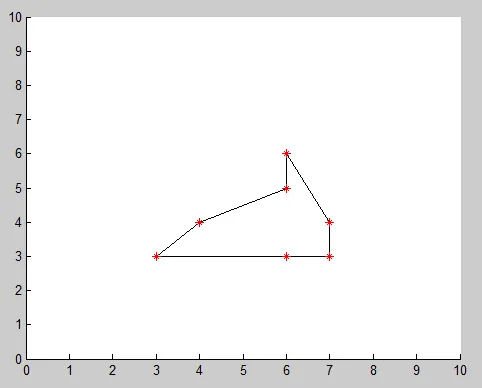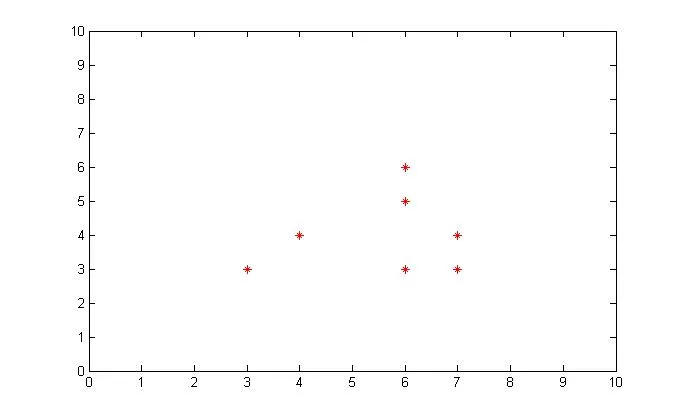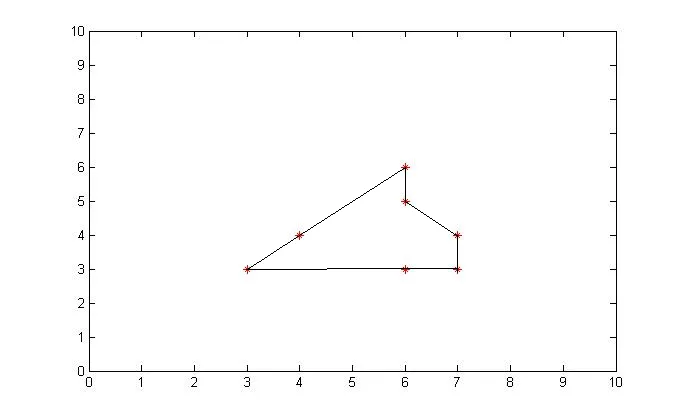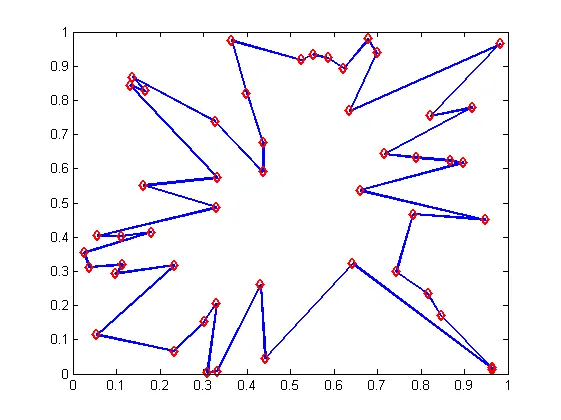您可以从
我给出的另一个答案中适应代码,用于生成任意边数的随机简单多边形。这里的区别在于您已经选择了点集,因此隐含了您想要的边数(即与唯一点的数量相同)。下面是代码示例:
xn = [6,3,7,7,6,6,6,4,6,3];
yn = [5,3,4,3,3,6,5,4,6,3];
[~, index] = unique([xn.' yn.'], 'rows', 'stable');
x = xn(index).';
y = yn(index).';
numSides = numel(index);
dt = DelaunayTri(x, y);
boundaryEdges = freeBoundary(dt);
numEdges = size(boundaryEdges, 1);
while numEdges ~= numSides
if numEdges > numSides
triIndex = vertexAttachments(dt, boundaryEdges(:,1));
triIndex = triIndex(randperm(numel(triIndex)));
keep = (cellfun('size', triIndex, 2) ~= 1);
end
if (numEdges < numSides) || all(keep)
triIndex = edgeAttachments(dt, boundaryEdges);
triIndex = triIndex(randperm(numel(triIndex)));
triPoints = dt([triIndex{:}], :);
keep = all(ismember(triPoints, boundaryEdges(:,1)), 2);
end
if all(keep)
warning('Couldn''t achieve desired number of sides!');
break
end
triPoints = dt.Triangulation;
triPoints(triIndex{find(~keep, 1)}, :) = [];
dt = TriRep(triPoints, x, y);
boundaryEdges = freeBoundary(dt);
numEdges = size(boundaryEdges, 1);
end
boundaryEdges = [boundaryEdges(:,1); boundaryEdges(1,1)];
x = dt.X(boundaryEdges, 1);
y = dt.X(boundaryEdges, 2);
这是生成的多边形:
patch(x,y,'w');
hold on;
plot(x,y,'r*');
axis([0 10 0 10]);

需要注意两点:



